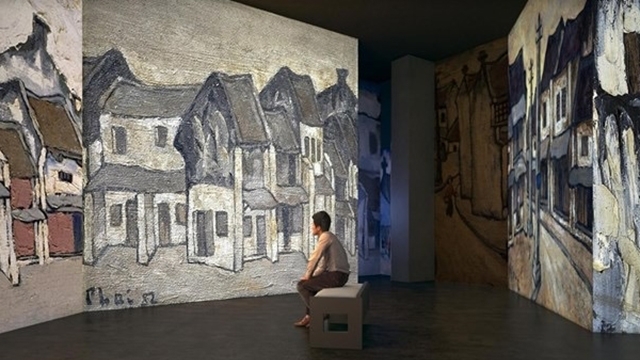New Experiences
In the era of the fourth industrial revolution (4.0), various fields have experienced unprecedented development. In the digital age, art creation, enjoyment, and exploration of museums, exhibitions, and even shopping for goods can all be done from the comfort of home through digital multimedia entertainment.
Technological advancements have also made a significant impact on the art world. For example, a portrait called Edmond de Belamy, created by artificial intelligence (AI), was sold for an astounding $432,000 at the esteemed art auction house Christie’s in New York. This sale demonstrated the ability of robots to create artworks. Just a year later, an exhibition of paintings, drawings, and sculptures created by Ai-Da, a humanoid robot programmed with AI, was unveiled at Oxford University in the UK and garnered around one million pounds.
In recent years, Vietnam has witnessed a rise in the utilization of digital technology in fine art projects, exhibitions, and artworks. These projects aim to provide visitors with a more immersive and interactive experience. Notably, in 2019, two large-scale and distinctive exhibitions captured the attention of experts and the general public. These were the “Van Gogh and his Works” exhibition at the Vincom Centre for Contemporary Art (VCCA) and the “Bui Xuan Phai with Hanoi” exhibition at the Hanoi Museum.
The “Van Gogh and his Works” exhibition introduced Vietnamese art enthusiasts to the masterpieces of Vincent Van Gogh, one of the greatest post-impressionist painters, through a completely new form: digital versions. The paintings, which included still life, self-portraits, trees, and landscapes, were showcased using high-resolution modern projectors. This allowed viewers to observe even the tiniest details. The combination of shapes, colors, brightness, and darkness created a unique and visually stimulating experience for visitors.
The “Bui Xuan Phai with Hanoi” exhibition displayed over 200 paintings by the renowned artist in three categories: Hanoi streets, traditional opera (‘cheo’), and sketches of his relatives and friends. The exhibition utilized 3D mapping and multimedia technologies, along with special sounds and lights, to merge realism with theatrical elements. Additionally, visitors had the opportunity to interact with the artworks thanks to AI technology. Their images were identified and sketched onto paintings of Hanoi streets in the style of Bui Xuan Phai.
Opportunities and Challenges
Some experts argue that the use of technology to display photos of paintings, rather than original works, is merely a gimmick that fails to capture the true meaning and artistic emotions. However, it is worth noting that these exhibitions have successfully attracted a large number of young people and sparked their interest in art. Through these events, visitors have had the opportunity to learn more about the artworks and the artists, leading to new ideas and discussions about art.
The application of technology to reshape the way artistic values are composed and conveyed, in accordance with public demand, has become a common trend in modern society. However, fine art is an artistic pursuit that celebrates the creativity of the artists. According to Assoc. Prof. Dr. Nguyen Nghia Phuong from Vietnam Fine Arts University, it is not always necessary to incorporate new technology into the artistic creation process. Nonetheless, the fourth industrial revolution has greatly impacted concepts, artistic practices, the sharing of information and professional knowledge, and the accessibility of art to the public for insights and feedback.
Notably, the field of applied art has seen immense influence from modern technology. With the internet and new technology, various design fields, such as communication, fashion, games, spaces, products, interaction, and user interface, have undergone breakthroughs and rapid changes, generating new socio-economic benefits.
Vietnamese fine arts have embraced the opportunities and challenges presented by the fourth industrial revolution, creating impressive works that align with current era trends while maintaining their traditional identities. These contributions contribute to the development of the country’s cultural industry.




